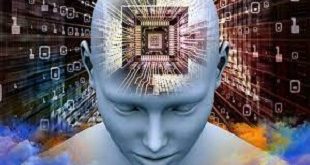Introduction
Artificial Intelligence (AI) has been a driving force behind some of the most transformative technological breakthroughs of the 21st century. With its ability to process vast amounts of data, learn from patterns, and make predictions, AI is rapidly changing the way we live, work, and interact with technology. In this comprehensive article, we’ll delve into the most significant AI breakthroughs of the recent past, their impact on various industries, and the potential they hold for the future. From deep learning to natural language processing, AI is evolving at an astonishing pace, offering solutions to complex problems and driving innovation across the board.
Chapter 1: Deep Learning Revolution
One of the most groundbreaking developments in the world of AI is the resurgence of neural networks and deep learning. This innovation has unlocked new horizons in AI capabilities, enabling machines to process and understand enormous datasets with unprecedented accuracy. Deep learning models, particularly Convolutional Neural Networks (CNNs) and Recurrent Neural Networks (RNNs), have played a pivotal role in image recognition, voice and speech analysis, and predictive analytics.
Deep learning’s success in computer vision has led to astonishing achievements in image recognition. AI-powered systems can now identify objects, people, and even subtle nuances in images, making facial recognition, security applications, and autonomous vehicles more accurate and reliable. The development of AI-driven recommendation systems has also enhanced user experiences across platforms, from e-commerce to streaming services.
Chapter 2: Natural Language Processing (NLP) Advancements
The field of Natural Language Processing (NLP) has witnessed remarkable advancements in recent years. NLP enables machines to understand and generate human language, leading to breakthroughs in chatbots, virtual assistants, and language translation. These applications are not only becoming more sophisticated but also more integrated into our daily lives.
Voice-activated virtual assistants like Siri, Alexa, and Google Assistant have become household names, making tasks as varied as setting reminders, answering questions, and controlling smart devices as easy as speaking. Chatbots have revolutionized customer service and online support, providing instant responses to queries and reducing the need for human intervention in routine interactions.
NLP has also led to breakthroughs in machine translation, making cross-lingual communication more accessible. Translation services like Google Translate have become indispensable tools for travelers and businesses operating in the global market.
Chapter 3: AI in Healthcare
AI has found its way into the healthcare sector, with a range of applications that are revolutionizing patient care, diagnostics, and drug discovery. Deep learning is being employed to analyze medical images like X-rays and MRIs, enhancing the speed and accuracy of disease detection. AI-driven diagnostic tools can detect early signs of conditions such as cancer and diabetic retinopathy.
Additionally, AI has the potential to personalize treatment plans. Machine learning algorithms can analyze an individual’s genetic makeup and medical history to tailor therapies and medications for maximum effectiveness. This approach holds promise for conditions with complex genetic factors, like cancer and cardiovascular disease.
Drug discovery has long been a laborious and costly process, but AI is changing that. Machine learning models can identify potential drug candidates by analyzing vast datasets of chemical compounds and their interactions. This accelerates drug development and could lead to breakthroughs in the treatment of previously incurable diseases.
Chapter 4: Autonomous Vehicles
In the realm of transportation, self-driving cars have made significant progress, bringing us closer to a future of safer and more efficient roadways. Companies like Waymo and Tesla have been at the forefront of this technological shift, conducting extensive testing and commercial deployments.
Autonomous vehicles rely heavily on AI for decision-making and navigation. Advanced sensors, including LiDAR, radar, and cameras, collect real-time data about the vehicle’s surroundings. Deep learning models process this data to identify road signs, other vehicles, pedestrians, and obstacles, allowing the vehicle to make split-second decisions to ensure safety and efficiency.
While fully autonomous cars are not yet commonplace, they hold the promise of reducing traffic accidents, improving traffic flow, and providing greater mobility for those unable to drive, such as the elderly and disabled.
Chapter 5: AI in Finance
AI has made a significant impact on the financial industry, with applications ranging from risk assessment and fraud detection to algorithmic trading. Machine learning models can analyze vast amounts of financial data to make predictions and decisions in real-time.
In risk assessment, AI is used to evaluate the creditworthiness of individuals and businesses. Machine learning algorithms can consider a wide array of factors, from credit history to social media activity, to provide a more comprehensive view of risk. This helps financial institutions make more informed lending decisions.
Fraud detection has also been enhanced by AI. Machine learning models can detect unusual patterns in financial transactions, helping to identify potential fraudulent activity. This has become increasingly important as online and digital transactions continue to grow.
Algorithmic trading relies on AI to analyze market data and execute trades at speeds far beyond human capabilities. These algorithms can make decisions in a matter of milliseconds, responding to market conditions and news events, making trading more efficient and potentially more profitable.
Chapter 6: AI-Powered Chatbots and Virtual Assistants
Chatbots and virtual assistants have made waves in customer service, offering instant responses to inquiries and providing personalized support. These AI-powered systems are being integrated into websites, apps, and customer service platforms, transforming the way businesses interact with their clients.
Chatbots use natural language processing to understand user queries and provide relevant responses. They can handle routine customer service tasks, such as answering frequently asked questions, processing orders, and troubleshooting common issues. This not only improves the customer experience but also frees up human agents to handle more complex inquiries.
Virtual assistants like Siri, Alexa, and Google Assistant have become ubiquitous in our daily lives. These voice-activated systems can perform tasks like setting reminders, answering questions, and controlling smart home devices, making them valuable tools for productivity and convenience.
Chapter 7: AI in Education
AI has also found its way into the education sector, with the potential to personalize learning experiences and improve educational outcomes. Intelligent tutoring systems use AI algorithms to assess a student’s performance and provide tailored lessons and exercises. This allows students to learn at their own pace and receive targeted support where needed.
In the field of language learning, AI-powered applications can provide real-time feedback on pronunciation and grammar. They can even engage students in natural language conversations, offering a more immersive and interactive learning experience.
AI is also assisting educators in administrative tasks. Chatbots can handle routine administrative queries, freeing up educators’ time for more meaningful interactions with students. Additionally, AI-driven analytics can help institutions track student performance and identify areas where additional support may be required.
Chapter 8: AI in Retail
AI has transformed the retail industry, enhancing the shopping experience for consumers and improving operational efficiency for businesses. Recommendation systems, powered by AI, provide personalized product suggestions to customers based on their preferences and past behavior. This has significantly increased customer engagement and sales for e-commerce platforms.
In physical retail, AI-driven technologies like computer vision are used for cashier-less stores, where customers can grab items and simply walk out, with the store automatically tracking their purchases and charging their accounts. This streamlines the shopping process and reduces the need for long checkout lines.
Inventory management has also been revolutionized by AI. Machine learning algorithms can predict demand for products, ensuring that retailers have the right products in stock


